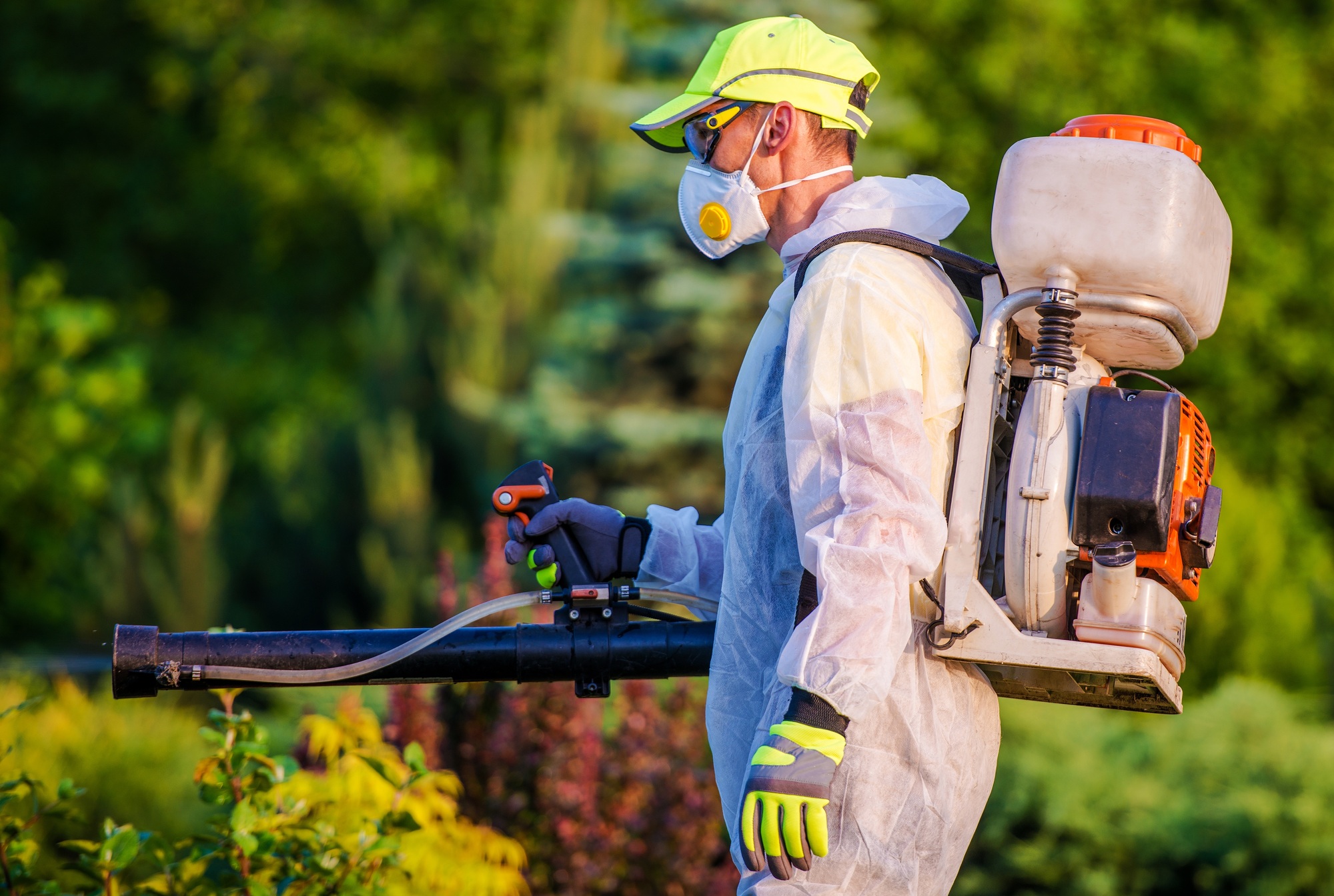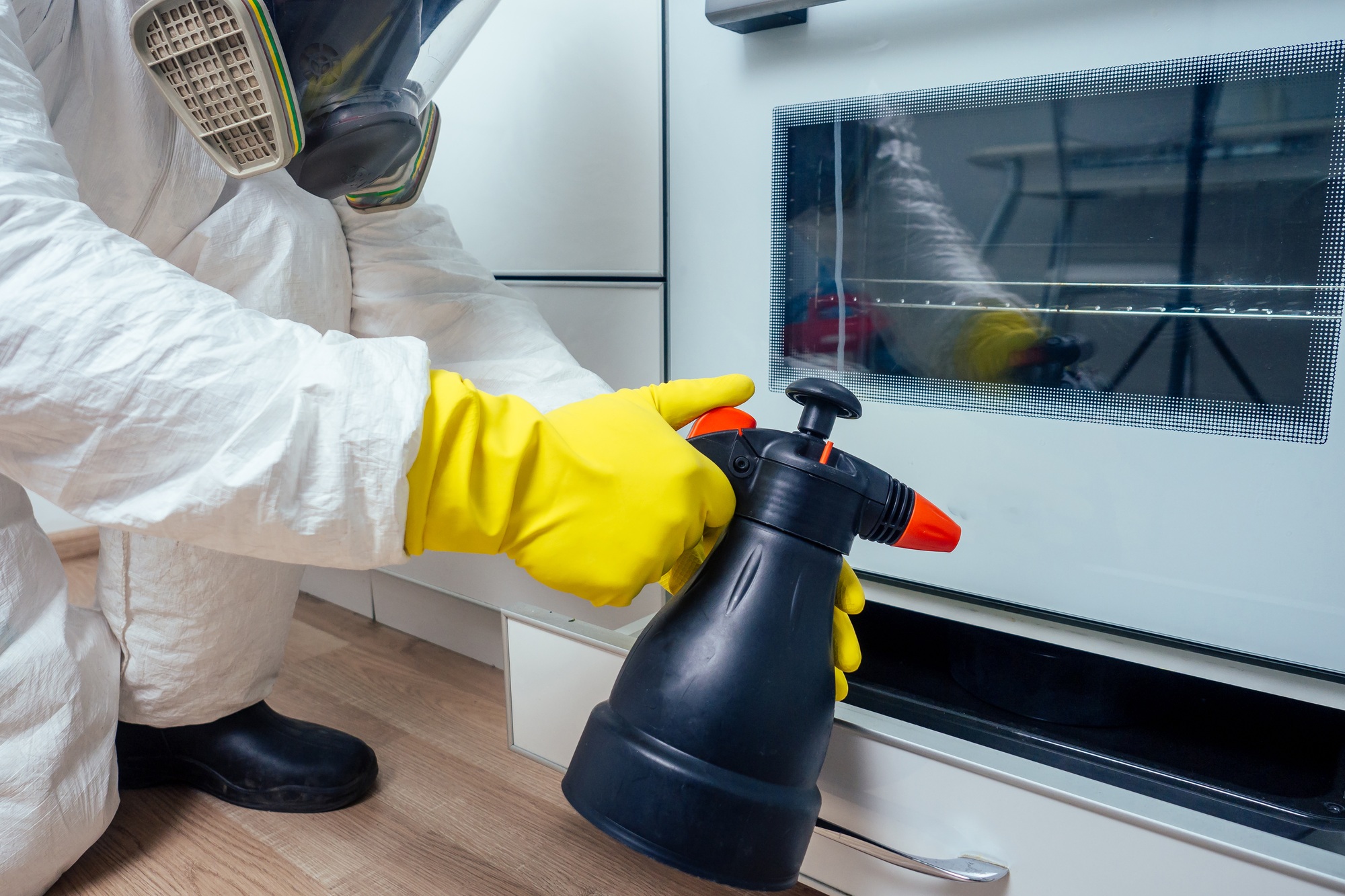Key Takeaways

- Regulatory Compliance: Understand local, state, and federal regulations for pest control to ensure your business operates legally and safely. Acquire all necessary licenses and certifications.
- Strategic Business Planning: Develop a comprehensive business plan that outlines your services, target market, marketing strategies, and financial projections to guide your operations.
- Invest in Proper Equipment: Purchase essential pest control tools and supplies, including sprayers, traps, and safety gear, to deliver effective services and maintain safety standards.
- Effective Marketing Strategies: Implement a mix of online and local marketing tactics to attract clients, such as building a professional website, utilizing social media, and participating in community events.
- Customer Satisfaction Focus: Prioritize customer service to foster repeat business, addressing complaints promptly and professionally to build trust and enhance your business reputation.
- Ongoing Education and Networking: Stay updated on industry trends and advancements through continuous education and networking within the pest control community to enhance your expertise and establish valuable connections.
Thinking about starting a pest control business? You’re not alone. With the increasing demand for pest management solutions, now’s the perfect time to dive into this thriving industry. Whether it’s ants invading homes or rodents causing havoc, people need reliable professionals to tackle these pesky problems.
How to Start a Pest Control Business

Starting a pest control business requires strategic planning and effective execution. Follow these steps to create a successful operation.
- Research Regulations. Understand local, state, and federal laws governing pest control services. Ensure compliance with licensing and certification requirements.
- Develop a Business Plan. Outline your business model, services offered, target market, and marketing strategies. Include financial projections and funding options in your plan.
- Obtain Necessary Licenses. Acquire pest control licenses specific to your jurisdiction. Complete required training and pass examinations to gain credibility.
- Purchase Equipment and Supplies. Invest in essential tools such as sprayers, traps, and safety gear. Source effective pest control products from reputable suppliers.
- Establish Pricing. Determine competitive pricing for your services. Consider costs, market rates, and the value provided to customers.
- Market Your Services. Create a marketing strategy to reach potential clients. Use online platforms, local advertising, and word-of-mouth referrals to increase visibility.
- Build a Customer Base. Focus on customer satisfaction to foster repeat business. Offer excellent service and respond promptly to inquiries to build trust.
- Continue Education. Stay informed on industry trends and new pest control techniques. Engage in ongoing training to enhance expertise and service quality.
By following these steps, you can successfully establish your small pest control business and address the growing demand for pest management services.
Understanding the Pest Control Industry

Starting a pest control business requires a solid grasp of the industry’s dynamics, including operational, legal, and financial components.
Overview of the Business
A pest control business delivers vital services to manage and eliminate pests, including termites, bed bugs, cockroaches, and rodents, for homeowners and businesses. The business demands technical skills and industry knowledge along with business acumen. Key steps for starting this small business encompass:
- Creating a business plan – Outline goals, target markets, and financial projections.
- Obtaining licenses and permits – Comply with local regulations to operate legally.
- Purchasing equipment and supplies – Acquire necessary tools for effective pest control.
- Choosing a business structure – Decide between sole proprietorship, LLC, or corporation.
- Getting business insurance – Protect your business from potential liabilities.
- Setting up a bank account – Manage finances separately from personal funds.
Market Demand and Trends
The pest control market exhibits substantial growth potential. The global pest control market achieved a value of $19.73 billion in 2019 and projects to reach $42.79 billion by 2032, indicating a CAGR of 6.19%. In the U.S., the professional pest control market holds a valuation of approximately $24 billion. This growth reflects an increasing need for reliable pest management services, presenting a favorable landscape for you to establish your pest control business.
Creating a Business Plan

A solid business plan serves as a roadmap for your pest control business, ensuring you address all essential components.
Defining Your Services
Specify the pest control services you intend to offer. Common services include termite treatments, ant extermination, rodent control, and bed bug eradication. Determine whether to provide residential, commercial, or both types of services. Clarity in your offerings enhances your marketing and helps potential customers understand what to expect.
Identifying Your Target Market
Analyze the demographics of your local area. Consider factors like population density, types of buildings, and common pest issues prevalent in the region. Understanding your target market enables tailored marketing strategies to reach homeowners, businesses, or property managers. Focus on segments that frequently require pest control, such as urban dwellers or health-sensitive establishments.
Financial Projections and Budgeting
Develop detailed financial projections. Outline expected income, expenses, and cash flow for at least the first three years. Include costs for equipment, supplies, marketing, insurance, and labor. Establish a budget that allows for operational stability while considering pricing strategies that attract customers. Accurate budgeting enables efficient resource allocation and financial planning.
Setting Business Goals
Define both short-term and long-term business goals. Short-term goals may include acquiring initial customers or achieving a specific revenue target within six months. Long-term goals might involve expanding your service area or adding new services. Clear goals guide your decision-making and keep your business aligned with your vision.
Legal Considerations

Starting a pest control business requires navigating several legal considerations to ensure compliance and successful operations.
Obtaining Necessary Licenses and Permits
Obtain all necessary licenses and permits required for your pest control business. Research state, county, and local regulations. Secure general business licenses along with specific pest control permits, which vary by jurisdiction. For instance, chemical application often requires specific permits to ensure safe practices.
Understanding Regulations and Compliance
Understand regulations governing pest control services. Comply with federal and state laws, including the Federal Insecticide, Fungicide, and Rodenticide Act (FIFRA). Ensure that all pesticides used are EPA-approved. Regularly review state-specific regulations to avoid legal issues and maintain compliance. Awareness of these guidelines protects your customers and your business.
Choosing a Business Structure
Choose an appropriate business structure for your pest control business. Consider options like sole proprietorships, partnerships, or limited liability companies (LLCs). Each structure presents different legal implications and tax responsibilities. For example, an LLC provides personal liability protection, separating personal assets from business debts, which can benefit small business owners in the pest control industry.
Tools and Equipment Needed
Successful operation of your pest control business requires specific tools and equipment essential for effective pest management. These items enable accurate application and enhance overall service quality.
Essential Equipment for Pest Control
- Backpack Sprayers: Use these portable devices for applying liquid pesticides, herbicides, or treatment products efficiently. Backpack sprayers ensure accurate and even application, minimizing chemical waste and environmental impact.
- Bait Stations: Incorporate enclosed containers designed for housing insect or rodent baits. Bait stations protect the bait from weather, non-target animals, and accidental human contact, increasing safety and effectiveness.
- Dust Applicator: Utilize dust applicators for precise application of powdered pesticide formulations into cracks, crevices, or voids. This tool ensures targeted application, enhancing control over pest infestations.
Recommended Pest Control Products
- Insecticides: Consider broad-spectrum insecticides for targeting a variety of pests. Select formulations based on specific infestations for effective treatment.
- Rodenticides: Choose highly effective rodenticides to manage rodent populations. These products should be registered and comply with local regulations for safe use.
- Pest Attractants: Use food-grade attractants to increase the efficiency of traps and baits. These attractants enhance targeting specific pest species.
Safety Gear and Certifications
- Protective Clothing: Wear items like gloves, masks, and goggles during applications for personal safety. Ensure all team members have appropriate equipment to minimize exposure to chemicals.
- First Aid Kit: Maintain a stocked first aid kit to handle any accidents or exposures during pest control operations. Having immediate access to medical supplies is crucial.
- Certifications: Obtain necessary certifications and licenses to comply with local and federal regulations. Completing training programs enhances your credibility and ensures safe pest management practices.
Marketing Your Pest Control Business
Effective marketing plays a crucial role in attracting clients and establishing a reputable pest control business. Utilize a combination of digital and localized marketing strategies to maximize your reach and customer base.
Building an Online Presence
Develop a professional website that highlights your pest control services. Include important information such as service descriptions, pricing, and contact details. Incorporate a blog to share pest control tips and industry updates, enhancing your credibility and SEO. Optimize your website for mobile users to accommodate the growing number of mobile searches for pest solutions.
Utilizing Social Media Platforms
Engage potential customers through popular social media platforms like Facebook, Instagram, and LinkedIn. Create informative posts that showcase your services and promote special offers. Share before-and-after photos of pest control jobs to demonstrate your effectiveness. Encourage satisfied customers to leave reviews and recommendations, boosting your online reputation.
Implementing Local Marketing Strategies
Focus on local marketing tactics to connect with your community. Distribute flyers and brochures in neighborhoods you serve. Attend local events to raise brand awareness and provide demonstrations of your pest control services. Partner with local businesses or real estate agents to offer referral programs, creating mutually beneficial relationships. Use online directories like Google My Business to ensure your business is easily findable in local searches.
Operations and Management
Operations and management play a vital role in ensuring the success of your pest control business. Focus on key areas such as setting up your business location, hiring qualified employees, training staff, and establishing effective procedures.
Setting Up Your Business Location
Choose a strategic business location that attracts clients. Consider locations with high pest activity or proximity to residential areas. Analyze local competition and identify spaces that offer visibility and accessibility. Additionally, ensure compliance with zoning laws and regulations that apply to pest control services. A well-located office or facility enhances brand presence.
Hiring Employees and Training Staff
Recruit skilled employees with relevant experience in pest control or customer service. Screen candidates thoroughly by evaluating their qualifications and background. Provide comprehensive training on pest management techniques, safety protocols, and customer interaction. Emphasize the importance of certification and continuous education in the industry. Effective training creates knowledgeable staff that increases client trust and satisfaction.
Establishing Standard Operating Procedures
Develop standard operating procedures (SOPs) that outline processes for service delivery, safety, and customer relations. Detail steps for pest identification, treatment methods, and follow-up care. Include protocols for handling hazardous materials and adhering to regulatory compliance. Regularly review and update SOPs to reflect changes in regulations or industry standards. Clear procedures enhance service efficiency and maintain high-quality service across your small business.
Troubleshooting Common Issues
Addressing common challenges fosters a positive reputation and enhances customer satisfaction in your pest control business.
Addressing Customer Complaints
Respond to customer complaints swiftly and professionally, demonstrating commitment to service quality. Listen carefully to the customer’s concerns; acknowledging their issues assists in building trust. Offer timely solutions, such as re-treating infested areas or providing refunds when justified. Maintain detailed records of interactions for accountability and improvement.
Handling Difficult Pest Control Situations
Prepare for complicated pest control scenarios by having effective strategies in place. Assess each situation thoroughly; identify the pest type, extent of infestation, and environmental factors. Communicate clearly with customers about treatment options, timelines, and potential outcomes. Utilize advanced techniques and equipment applicable to the specific pest issue, ensuring a comprehensive solution to restore the customer’s peace of mind.
Helpful Tips for Success
Implementing effective strategies enhances your pest control business. Utilize key practices for a successful operation.
Networking with Industry Professionals
Engage with industry professionals to expand your network. Attend industry conferences and local meetups to build relationships. Collaborate with other pest control companies for insight and support. Join online forums and social media groups to exchange ideas and share experiences. Networking fosters connections that can lead to referrals and partnerships, strengthening your small business.
Keeping Up with Industry Trends
Stay informed about pest control industry trends to remain competitive. Subscribe to industry publications and follow reputable blogs that cover pest management innovations and regulations. Attend webinars and training sessions that focus on new treatment methods and technologies. Regularly reviewing these resources equips you with knowledge to adjust your services and strategies, ensuring your business stays relevant in a dynamic market.
Conclusion
Starting a pest control business presents a unique opportunity to tap into a growing market. With the right preparation and commitment, you can establish a successful venture that meets the increasing demand for pest management services. Focus on building a solid foundation through effective planning, compliance with regulations, and continuous learning.
By prioritizing customer satisfaction and investing in marketing strategies, you’ll create a strong reputation in your community. Networking with industry professionals will also open doors for collaboration and growth. Embrace the challenges ahead and stay informed about industry trends to ensure your business thrives in this competitive landscape. Your journey in pest control can lead to rewarding experiences and a prosperous future.
Frequently Asked Questions
What is the demand for pest control services?
The demand for pest control services has significantly increased due to growing awareness of pest-related issues. With a pest control market projected to reach $42.79 billion by 2032, there is a substantial opportunity for new business entrants to meet this rising need.
What are the essential steps to start a pest control business?
To start a pest control business, research industry regulations, develop a business plan, obtain necessary licenses, purchase equipment, set competitive prices, market your services, build a customer base, and engage in continuous education to stay updated.
What licenses do I need for a pest control business?
Licenses required for a pest control business vary by jurisdiction. It’s crucial to research local regulations and obtain necessary licenses and permits, including compliance with the Federal Insecticide, Fungicide, and Rodenticide Act (FIFRA).
How do I develop a business plan for my pest control business?
A business plan should clearly define your services, target market, and financial projections. Set both short-term and long-term goals to guide decision-making and align your business with its vision in the pest control industry.
What tools and equipment do I need for pest control?
Essential tools include backpack sprayers, bait stations, and dust applicators. Additionally, invest in broad-spectrum insecticides, rodenticides, and proper safety gear, such as protective clothing and first aid supplies, to ensure compliance and safety.
How can I market my pest control business effectively?
Utilize digital and local marketing strategies. Create a professional website, engage in social media, and implement localized tactics like flyers and community event participation to increase visibility and build your customer base.
What operational practices should I implement?
Establish a strategic business location, hire qualified staff, and provide thorough training on pest management and customer service. Create standard operating procedures for service delivery to maintain efficient operations and high-quality service.
How can I handle customer complaints in my pest control business?
Address customer complaints swiftly and professionally to enhance your reputation. Assess each case thoroughly, communicate clearly about treatment options, and use effective techniques to provide satisfactory solutions to their pest issues.
Image Via Envato: LightFieldStudios, yurakrasil, duallogic, DragonImages, afihermatova



